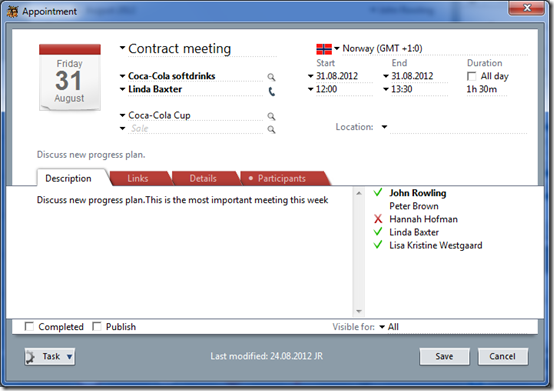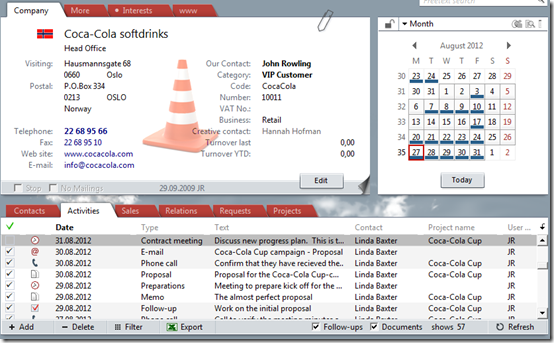From time to time people ask me: “Why does SuperOffice have its own calendar?” or “Everyone else uses Outlook calendar – why doesn’t SuperOffice just drop its calendar and let the users use Outlook instead?”
Picture of the SuperOffice calendar:
In order to answer this question, we first have to take a look at Activities in SuperOffice and how they are used. Activities in SuperOffice are documented trails of customer communication like phone calls, meetings, emails, proposals, etc. Activities further create tasks and follow ups which drive your everyday business. With Activities, you know what to do, when to do it and who will be doing it.
Together with Activities, the SuperOffice calendar is your Outlook calendar on steroids. Just like Outlook, it has the date and time. It allows you to invite other people to meetings and shows you when they’ve accepted a meeting. But, what your Outlook calendar can’t do is to register all these activities into a common customer database.
With the SuperOffice calendar, all employee calendars and their activities can be shared throughout the whole organization. Is someone sick today? No problem. Has someone left the company? No problem.
Outlook, Notes or similar calendar systems can’t do this for you. Booking a meeting in your Outlook calendar helps you organize your day, but once the meeting is completed, the activity in Outlook is worthless. It doesn’t automatically become a part of the customer’s information. And, if you expect that someone will register the activity in your CRM system after the fact, you can pretty much say “bye bye” to that bit of information.
Synchronizing calendars won’t work either. If you book your meetings in Outlook, the appointment will not be tagged with the correct company in some magic way which allows it to automatically appear in the correct place in the CRM system. This still has to be done manually. And manual methods are pretty extinct in these busy times.
So in short, we’re sticking with the SuperOffice calendar. It’s the best way we know of to help you keep track of your customer history, as well as all the activities that are happening in your organization. This all leads to closer customer relationships. And, well, isn’t that what it’s all about?




